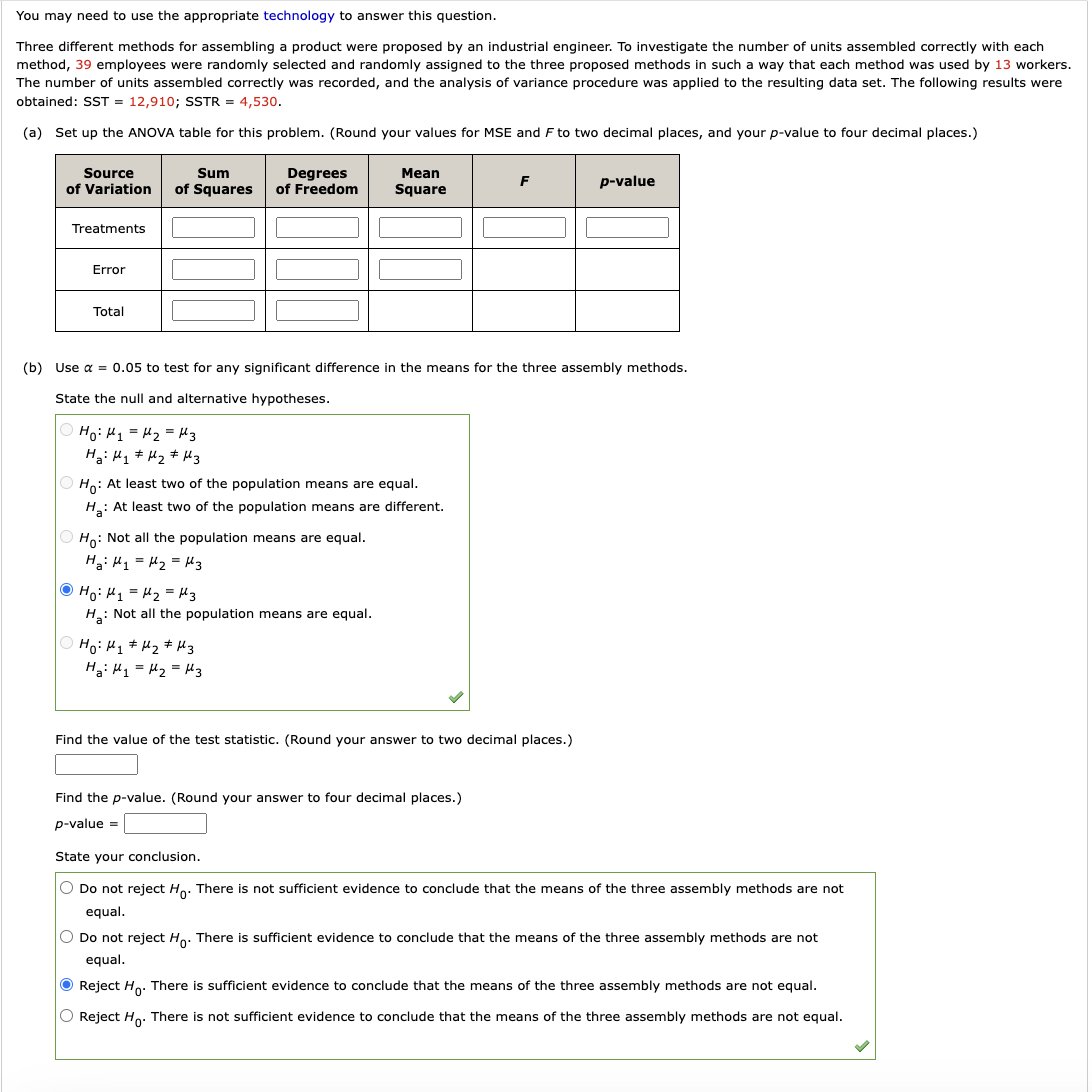Home /
Expert Answers /
Statistics and Probability /
you-may-need-to-use-the-appropriate-technology-to-answer-this-question-three-different-methods-for-pa916
(Solved): You may need to use the appropriate technology to answer this question. Three different methods for ...

You may need to use the appropriate technology to answer this question. Three different methods for assembling a product were proposed by an industrial engineer. To investigate the number of units assembled correctly with each method, 39 employees were randomly selected and randomly assigned to the three proposed methods in such a way that each method was used by 13 workers. The number of units assembled correctly was recorded, and the analysis of variance procedure was applied to the resulting data set. The following results were obtained: SST SSTR . (a) Set up the ANOVA table for this problem. (Round your values for MSE and to two decimal places, and your -value to four decimal places.) (b) Use to test for any significant difference in the means for the three assembly methods. State the null and alternative hypotheses. : At least two of the population means are equal. : At least two of the population means are different. : Not all the population means are equal. Find the value of the test statistic. (Round your answer to two decimal places.) Find the -value. (Round your answer to four decimal places.) -value State your conclusion. Do not reject . There is not sufficient evidence to conclude that the means of the three assembly methods are not equal. Do not reject . There is sufficient evidence to conclude that the means of the three assembly methods are not equal. Reject . There is sufficient evidence to conclude that the means of the three assembly methods are not equal. Reject . There is not sufficient evidence to conclude that the means of the three assembly methods are not equal.